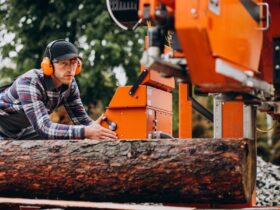Walking should be one of the safest ways to get around. It’s simple, it’s good for your health, and it doesn’t cost a thing. But in many cities and towns today, taking a walk has become more dangerous than it should be. From poorly maintained roads to modern vehicles that hardly make a sound, pedestrians face real risks every time they step onto the street.
Two growing problems—faded crosswalks and low-noise vehicles—are creating serious safety concerns. Many people don’t think twice about these issues, but they’re contributing to more accidents than you might expect. If you or someone you know has been hurt in a road accident, it might be time to consult a pedestrian accident lawyer. Getting the right help early can make all the difference when dealing with medical bills and legal matters.
The Problem with Faded Crosswalks
Crosswalks are supposed to keep pedestrians safe. They mark out where it’s safe to walk and signal drivers to slow down and stop. But when those lines fade or disappear completely, they no longer offer any real protection.
Drivers may not realize they’re approaching a crosswalk at all. And if street lighting is poor or it’s raining, the chances of missing those faded markings go up even more. For pedestrians, this creates a dangerous situation where they expect safety—but drivers don’t even know they should stop.
Cities are supposed to repaint crosswalks regularly. However, due to budget cuts or lack of planning, many are ignored. The result? Crosswalks that look more like ghost lines than safety zones.
The Rise of Quiet Vehicles
Another growing concern is the number of electric and hybrid vehicles on the road. These cars are great for the environment, but they come with a downside—low noise. Unlike gas-powered cars, electric vehicles often make very little sound, especially when driving at low speeds.
This might not seem like a big deal at first. But think about how many times you’ve heard a car before you’ve seen it. Sound gives us clues that something is coming. It helps us know when to stop, wait, or move quickly.
Without that sound, pedestrians—especially children, seniors, or those with vision problems—may not realize a car is near. This makes quiet vehicles a hidden danger in places like parking lots, school zones, and residential areas.
Who Is Most at Risk?
While everyone is at risk, some groups face more danger than others. Older adults often walk slower and may have trouble seeing faded paint. Children are more likely to dart across the street without checking first. People who are blind or have low vision depend on sound to guide them.
For these groups, the mix of faded crosswalks and nearly silent vehicles is especially risky.
What Can Be Done?
There are several things cities and communities can do. First, crosswalks should be repainted more often, using brighter and more durable materials. Adding signs, lights, or even raised bumps can also help alert drivers.
Second, rules should be in place requiring electric vehicles to emit a soft noise when moving at low speeds. In fact, some countries have already started doing this. It’s a small change that could save lives.
Finally, public awareness is key. Drivers should know to slow down in areas where crosswalks are worn. Pedestrians should stay alert and never assume drivers can see them.
Final Thoughts
Walking shouldn’t be risky. But with fading crosswalks and silent vehicles, danger can sneak up without warning. These problems may seem small on their own, but together, they create serious safety concerns.
The good news? With awareness, better rules, and safer streets, we can reduce these risks. Until then, stay alert—and speak up if your city isn’t maintaining its crosswalks. Safety should never be an afterthought.







